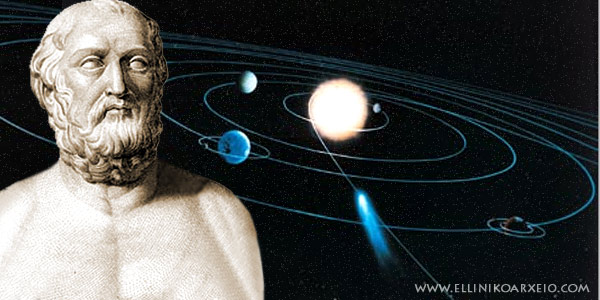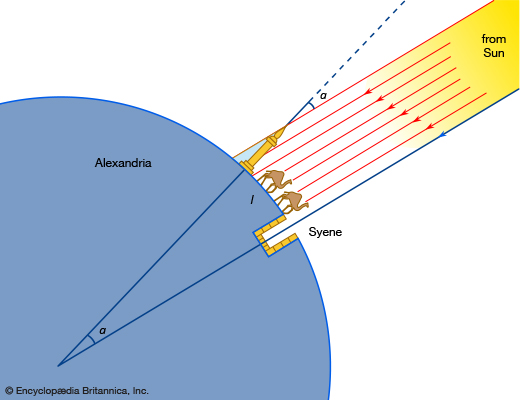
You might have heard of Aristotle. He’s the guy who said that we are what we repeatedly do. His words are often interpreted to mean that, for instance, a person who farms is therefore a farmer—or a person who writes science posts is, therefore, a science writer.
He also contributed a lot to the arenas of politics, philosophy, and basically every other field of study the Greeks could think of. His teachings were almost as widely accepted as Plato’s. And, like Plato, he had a few ideas about astronomy.
Well, most of what he taught about astronomy was dead wrong. But he had his moments. And his failures illustrate an important concept of science. No level of understanding is beyond our reach, and sometimes it takes pure imagination and guesswork to get there.
Aristotle may have been wrong most of the time, but he dared to imagine. And that’s something all scientists must do.
During Aristotle’s time, the scientific method wasn’t a thing yet. The Greeks never considered research, then hypothesizing, then experimentation, and then analysis of results to be an appropriate method of thought.
Aristotle’s thinking style was similar to other Greeks of the time—everything he knew was based on a few “first principles.” That’s what the ancient Greeks called those ideas that were held to be obviously true—like the perfection of the heavens.
From his first principles, Aristotle carefully reasoned with logic. Anything logically derived from a first principle was presumed to also be true. You can see where this method led Aristotle astray—he based all his logic on something that wasn’t true.
The heavens aren’t perfect—everything we know was born from chaos.
Aristotle reasoned that the universe was divided into two parts. Earth was imperfect and changeable—hence the growth of plants, the changing of winds, the movement of all its lifeforms, and all the other little things that made it imperfect.
The heavens, however—which basically meant everything we can see in the sky—were perfect and unchanging. Nothing in the sky could move. Well, technically, everything in the sky rotated in perfect uniform motion, but that was all the motion that happened.

Untrue, of course. We know today that the daily motion of the sky around us is actually caused by Earth’s rotation.
The funny thing is, this should have made sense with Aristotle’s universe—the Earth is imperfect and changeable, so it’s allowed to move. But I guess it never occurred to him that the Earth didn’t stay still, when he never felt it move beneath his feet.
Aristotle’s model was just one version of the geocentric universe. The word “geocentric” literally means Earth-centric, meaning that Earth was believed to be the center.
And it wasn’t the last of the geocentric models. Many Greek philosophers and astronomers adapted and changed the geocentric model before one of them finally figured out that the Earth actually moved around the sun.
But we can’t blame them for being a little confused at first. If you weren’t taught in primary school that Earth orbited around the sun every year, wouldn’t you believe that the ground beneath your feet really was solid and unmoving?
In order to get his geocentric universe to work, Aristotle proposed that 55 crystalline spheres surrounded the Earth. These were responsible for the motions of the heavens, and they turned at different rates and different angles to carry the sun, moon, and planets across the sky.
You might think that all these spheres turning at different angles and even different speeds went against that whole “perfection of the heavens” and uniform motion idea, but as long as each individual one never changed direction, sped up, or slowed down, everything was fine.
Aristotle, surprisingly enough, had a couple of challengers in his time. But then, every influential historical figure had a few contenders.
Aristarchus, for example, actually came up with the right idea before anyone else.

Goodness knows where Aristarchus got the idea. In his time, it would have been downright crazy to suggest that anything but the Earth was the center of everything. But Aristarchus actually suggested that the Earth revolved around the sun.
He even went so far as to say that the Earth rotated on its axis—which it does.
Chances are Aristarchus was still plagued by the idea of uniform circular motion, which absolutely, completely doesn’t exist in the universe. It’s the idea that everything in the universe moves in perfect circles, never speeding up and never slowing down.
Nope, just doesn’t happen.
Johannes Kepler was the first to break free of that idea, but we’ll talk about him in a later post.
Unfortunately for Aristarchus, nobody believed him. And most of his writings were lost, so we don’t actually know much about his theory. Humanity would have to wait a while longer before it figured out the secrets of the cosmos.
Eratosthenes, however, came pretty close. He focused on figuring out something much closer to home—just how big was the Earth?
By this time, Aristotle understood that it was a sphere. He knew that because he knew lunar eclipses—eclipses of the moon—were caused when Earth’s shadow fell over the moon.
And the shadow was always curved, suggesting that Earth appeared circular from any angle. A sphere was the logical answer.

Eratosthenes used simple geometry to measure Earth’s size. And his methods were impressive for his time.
Travelers from the city of Syene in southern Egypt told him of a well that was always fully illuminated on the summer solstice. Sunlight shone straight down into it. That meant that on that day in Syene, the sun was at the zenith—directly overhead in the sky.
But Eratosthenes noticed that on that same day in Alexandria, the sun was definitely not at the zenith. It was about 7° south, which he measured at the time as about 1/50 of the circumference of the sky.
He found out the distance from Alexandria to Syene. Travelers told him that it took 50 days to cover the distance by camel, and Eratosthenes knew that camels could walk about 100 “stadia” each day. That meant that Alexandria was 5000 stadia away from Syene.
All he had left to do was figure out the Earth’s circumference.

If the angle between the sun and the zenith in Alexandria was 1/50th of the circumference of the sky—or 7°—then the angle between Alexandria and Syene, with its vertex and the center of the Earth, was also 7°.
And that meant the distance between them was 1/50th the circumference of the Earth.
Eratosthenes measured the Earth’s circumference to be 250,000 stadia. By dividing by 2𝛑, he calculated the Earth’s radius—half its diameter—to be 40,000 stadia.
Surprisingly, Eratosthenes wasn’t far off. Stadia have had different lengths in ancient times, but he was off by 14% at most, and could have been off by only 4%. His measurement was much more accurate than the one Aristotle suggested, which was about 40% of Earth’s true radius.
As you can see, the Greeks were getting on the right track at this point, starting with Eratosthenes. And they would only aim closer to the truth as time went on…
That’s pretty amazing stuff, I didn’t know that’s how they worked this all out.
How are ya Emma? ☺️
LikeLiked by 1 person
And we’ve got a long way to go yet before the Greeks finally cotton on to the true nature of the universe!
Doing well, you? I have no clue how I’m doing school and a post a day at the same time, but I’m managing…
LikeLike
I imagine that you’re fitting in somehow but you shouldn’t stress over it if you can’t ☺️
LikeLiked by 1 person
Well, helps to just write seven posts over the weekend and schedule them. I have no time for blogging mon-Thursday.
LikeLike
Ah that is a good thing to do!
LikeLiked by 1 person
Yup. Today’s my post-writing day 🙂 Put ’em off till tomorrow and they’ll never get written!
LikeLike
I know that feeling ☺️
LikeLiked by 1 person
But that means I basically get a self-done crash course in everything from Copernicus to Newton and Galileo today! Not entirely sure who we’ll finish off with, but I’m hoping I can get through classical astronomy this week…then, soon enough, we can move on to modern astronomy and the electromagnetic spectrum and stuff…
LikeLike
Your attacking this properly aren’t you?
LikeLiked by 1 person
Oh I’m taking SaYD through all the basics of astronomy. Eventually we’ll graduate to new research, but for the moment I’m getting this info from a textbook on the “foundations” of astronomy…if that’s not a chance to “attack this properly” I don’t know what is.
LikeLike
I know that feeling well 😜
LikeLiked by 1 person